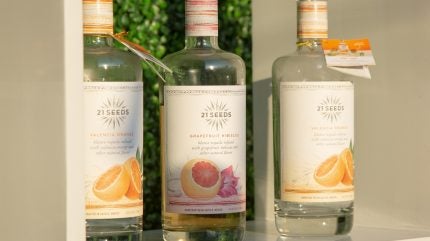
It would be hard to argue against the contention that Tequila has been the greatest success story of the spirits industry over the past decade. But it would be utterly impossible to contend that category growth has been entirely balanced and spread over a range of markets and price points.
For brands like Diageo’s Don Julio and Casamigos, astonishingly high revenue growth rates of 25%, 50% or more became the norm; the company freely admitted it literally couldn’t keep up with demand at the peak of the boom. That’s not the case anymore but a settling of the fortunes of the category will be no bad thing in the longer term.
The most remarkable aspect of the rise of agave has been its relative confinement – in terms of rapid growth – to one market (the US) and very elevated price tiers (ultra-premium and above). It’s the kind of growth trajectory that couldn’t – and probably shouldn’t – last forever.
The events of 2023 may not exactly have signalled the end of the Tequila boom in the US but an interruption to the pattern of unprecedented growth is prompting brand owners to take a fresh look at the category. And Diageo is a prime example of that shift in mentality.
We discussed last month that the company was – arguably belatedly – taking Tequila global, targeting the clear potential of Asia and southern Europe and embarking on the ten-year journey of internationalising the category’s appeal that late former CEO Sir Ivan Menezes described several years back.
In the first half of fiscal 2024, Diageo’s net sales for Tequila outside North America and LAC (Latin America & Caribbean) more than doubled. All very well but it says more about how tiny the category is outside the Americas than anything else.
Tequila has huge potential in these markets but inevitably its progress won’t be entirely linear. We’ve already seen category volumes dip in the UK as perceptions gradually shift from cheap shots and slammers to something more sophisticated and centred on cocktails and sipping.
The same trend will doubtlessly be repeated elsewhere but in some emerging markets it may be that the ‘old’ formula of pushing Tequila as a party spirit will be a winner. A versatile, multi-faceted and flexible approach is a must.
Cheaper Tequila brands could soon get more focus in US
For hard-headed industry watchers considering current market trends, however, this internationalisation process is little more than a temporary distraction. What, they want to know, is happening in the US?
Here, too, the shift in thinking and communicating about Tequila is apparent. Leaf back through past Diageo results announcements, and all the talk was of Don Julio and Casamigos, and for understandable reasons, given their scale, growth trajectory and contribution to profit.
Less so in the company’s H1 results announcement and presentations. As Don Julio and Casamigos have cooled – thanks to a combination, I’d argue, of inventory loading, increasing category maturity and consumer caution – a little of the corporate focus has drifted towards the rest of the company’s Tequila stable.
Suddenly the likes of DeLeón, 21 Seeds and Astral are being talked up when previously they barely rated a mention (save, perhaps, in commentary on Diageo’s protracted legal dispute with Sean ‘Diddy’ Combs).
This was also apparent during last week’s CAGNY presentation in Florida, when Diageo CEO Debra Crew told attendees: “Our participation in Tequila is more than Don Julio and Casamigos and we are confident that there is much more to go after. Even though we are the number one player here in the US, household penetration remains lower than other categories, just under two-thirds that of whisky.
“Through DeLeón, which we now fully own, along with Astral and 21 Seeds, our Tequila portfolio extends into the super-premium price tier, enabling us to participate in that booming segment of the category in the US.”
As downtrading goes, a shift from ultra-premium/luxury (Don Julio, Casamigos) to super-premium (DeLeón, 21 Seeds, Astral) is hardly a disaster. That said, market trends and data from 2023 suggest that – for the first time in ages – volume growth was marginally more pronounced for Tequilas priced below the premium level than those above.
That may be a short-lived phenomenon, of course, but it hints at a longer-term maturation of the category that brand owners need to keep a close eye on. Agave’s appeal is particularly powerful among younger age groups such as Gen Z and Millennials, who are more likely to be feeling the economic pain right now. And they may well trade down as a result.
If that analysis is true, it makes the adoption of a portfolio approach across brands and price segments even more important as Tequila matures. Think of Diageo’s approach in Scotch whisky, where it has successfully reacted to macroeconomic and consumer shifts by switching the emphasis to lower-priced products: pushing Black & White in Latin America, when consumers find Johnnie Walker and Buchanan’s too pricey.
We’re not at that stage with agave yet, but it’s starting. As a strategy, it protects the brand equity and profitability of the marquee brands – Don Julio, Casamigos – while preventing consumers from trading down and out of the category altogether.
And for the category, while it may be experiencing some mild growing pains right now, it’s a sign of increasing maturity and the broadening of its appeal. The heady boom days may be all but over but Tequila still has plenty of good times around the corner.



